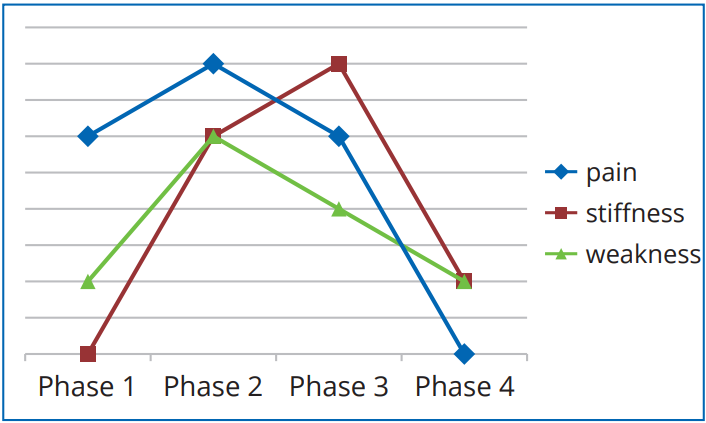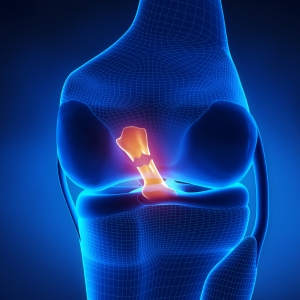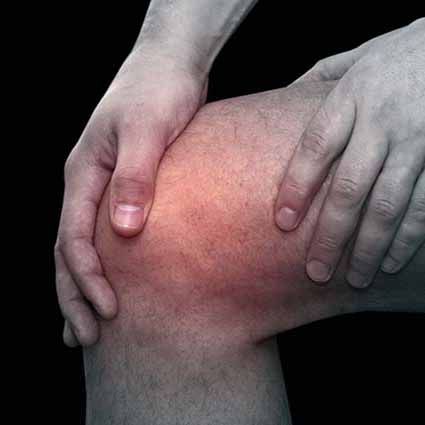Frozen shoulder is a condition where a shoulder becomes very painful and stiff. Movement of the shoulder becomes reduced, sometimes completely ‘frozen’. Without treatment, the condition may be progressive and it canmay take 2-3 years for recovery. Various treatments are available to ease the pain, improve shoulder movement and shorten the recovery time.
Common causes of frozen shoulder
Frozen shoulder is thought to be due to scar-like tissue forming in the shoulder capsule. The exact cause is not known though. I it is more common in people with diabetes and thyroid problems. Minor strain of, or injury to, the shoulder areis thought to be the predisposing factorss of frozen shoulder.
Diagnosis
The diagnosis is usually confirmed by clinical assessment and a detailed physical examination. An X-ray is usually not necessary, though but MRI (Magnetic Resonance Imaging) or ultrasound may give a detailed view of the shoulder structures to help decide the treamenttreatment plan.

Signs and symptoms
Typical symptoms are pain, stiffness and limitation in the range of movement of the shoulder. The symptoms typically have four phases:
- Phase 1- the painful phase. Pain is the major symptom. Range of movement of the shoulder is not affected.
- Phase 2 - the ‘freezing’, painful phase. This typically lasts 2-9 months. Stiffness and limitation in movement gradually build up and there is an increase of pain. The pain is typically worse at night, and when lying on the affected side. Daily activities become gradually affected.
- Phase 3 - the ‘frozen’, stiff phase. This typically lasts 4-12 months. Pain gradually eases but stiffness and limitation in movement remain and can get worse. All movements of the shoulder are affected but the movement most severely affected is usually rotation of the arm out wards or inwards (like scratching the back). The contour of the shoulder may be altered due to muscle weakness

- Phase 4 - the ‘thawing’ recovery phase. This typically lasts 5-24 months. The stiffness gradually goes and movement gradually returns to normal or near to 80% normal.
Symptoms often interfere with everyday tasks such as driving, dressing and sleeping. Even scratching the back or putting a hand in the rear pocket may become impossible. Work may be affected as well.
Treatment
Conservative treatment
During the painful phase the emphasis is on pain relief. Anti-inflammatory medication may be prescribed by the doctor or a steroid injection may be given if the pain is not controlled. Pain relieving treatment such as electrotherapy and acupuncture can be offered by the physiotherapist. Forcing the shoulder to move can make it more painful and therefore it is not advisable in the early stage.
When the stiffness becomes more evident than pain, physiotherapy including manual therapy and specific exercises will be crucial in improving the range of motion and strength of the shoulder.

Although complete resolution of frozen shoulder can take up to 2 years, physiotherapy helps in minimising pain and disability, accelerating the healing process.
Over 90% of frozen shoulders can be treated effectively by non-operative treatment.
Other treatments
If the pain and stiffness are causing significant incapacity, or prolonged stiffness, or when there is underlying trauma to the shoulder, the doctor may suggest a shoulder injection, manipulation under anaesthesia or arthroscopic surgery. Intensive physiotherapy treatment is also necessary after these procedures to achieve a good recovery.
Call us now at 2537 7407 to arrange an appointment with our medical professionals, or simply click the below link to book online:
Articles on this website are informative only and not intended to be a substitute for professional medical advice, diagnosis or treatment. They should not be relied upon for specific medical advice.

Information provided by:
Physiotherapy Department, Matilda International Hospital










